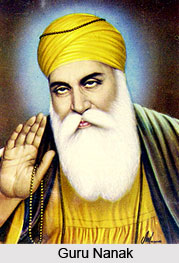 Andaja in Punjabi language means egg. Guru Nanak has used the word Andaja in another hymn where he says: "Andaja jaraja utabhuja setaja tere kite j ant a". It means that those born from egg, placenta, earth or sweat are all your creation. In this hymn the details of the created world have been given. This hymn has some similarity with the other two creation hymns. However it is not an independent hymn but is part of a poem written by Guru Nanak in Raga Bilavalu.
Andaja in Punjabi language means egg. Guru Nanak has used the word Andaja in another hymn where he says: "Andaja jaraja utabhuja setaja tere kite j ant a". It means that those born from egg, placenta, earth or sweat are all your creation. In this hymn the details of the created world have been given. This hymn has some similarity with the other two creation hymns. However it is not an independent hymn but is part of a poem written by Guru Nanak in Raga Bilavalu.
In order to say the poem Guru Nanak has used 15 lunar days. On the first lunar day he describes about the Absolute Being who is one, unique, eternal, without birth, without identity, without impurity, unreachable, impenetrable and formless but permeates in every human heart. On the second lunar day he speaks about the problems faced by people like death, lust and so on. On the third and fourth days he narrates the story of creation. The rest of the lunar days he gives other instructions.
He starts with the Creator`s initiative for creation. The creation list includes earth, sky, night, day, Gods, Vedas, Puranas and Shastras. The Creator has created everything and takes care of all. There is only one Creator whom he addresses on the first lunar day as ekamkaru or one Supreme Being. The implication of `egg` here is that the Creator is making from a pre-existing matter. Andaja actually is the entire life. Furthermore Guru Nanak refers to existing concepts as symbols to make more explicable.
The act of creation is related to `egg`. While going through the content of the hymns, it is clear that the phrases and names are according to context or people whom Guru Nanak had met. He has used the symbol of Andaja to express his thoughts on creation. He has emphasized that all gods and goddesses are part of the created world. However the query of creation from pre-existing matter has not been answered in Andaja hymn. There is a possibility that it is not an independent hymn and it is part of a longer poem, in which many other basic thoughts and teachings have been dealt.




















